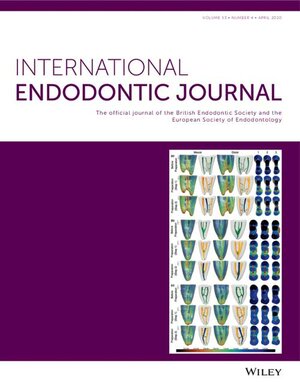Novel pain assessment tool specific for pulp symptoms to aid diagnosis
Abstract
Aim
Although many pain assessment tools exist, none are specific to the relatively unique presentation of pulpal pain. The aim of this study was to develop and validate a novel pain assessment tool based on pulp symptoms.
Methodology
A preliminary list of items best-describing pulpitis was developed based on deductive and inductive approaches and the preliminary tool was piloted (n = 80). A final 11-item pain assessment tool was developed comprising 5 closed-ended items evaluating pain intensity to diverse stimuli (thermal and sweet) and 6 closed-ended items assessing various aspects of pulp pain (such as spontaneity, duration, referral, postural pain, pain upon biting and requirement for analgesics). The tool was tested on 300 adult patients (age range = 18–54 years) who presented with symptoms indicating some form of pulpitis. The 11 items were each scored from 1 to 4, yielding a total score between 11 and 44. These scores were subsequently compared to a set of diagnoses made utilizing established clinical reference standards, these include patient history, clinical examination, periapical radiographs, and pulp testing.
Results
All items in the tool reached an excellent content validity index score (≥0.83) for relevance. Following the pilot, six items were rephrased and five were removed. After final testing the constructed tool had a reliability coefficient of .8641, indicating a high level of internal consistency. Factor analysis extracted two factors that accounted for 59.61% of variance. The sensitivity and specificity was 95.36% and 86.58%, respectively. Likelihood ratio was 7.104 (LR+) and 0.05 (LR−) at cut-off point. The area under the ROC curve was 0.9714 with a SE of 0.0076. The cut off score by Youden index was 25 between reversible and irreversible pulpitis.
Conclusions
The developed tool proved to be both valid and reliable. It is the first comprehensive multidimensional tool designed to standardize the pulp pain assessment protocol, covering various attributes of pulp pain and effectively distinguishing between reversible and irreversible pulpitis with a defined cut-off score. Furthermore, its use is anticipated to provide support in diagnosing ambiguous cases of inflamed pulp, which is especially helpful for less experienced dentists.

 求助内容:
求助内容: 应助结果提醒方式:
应助结果提醒方式:


